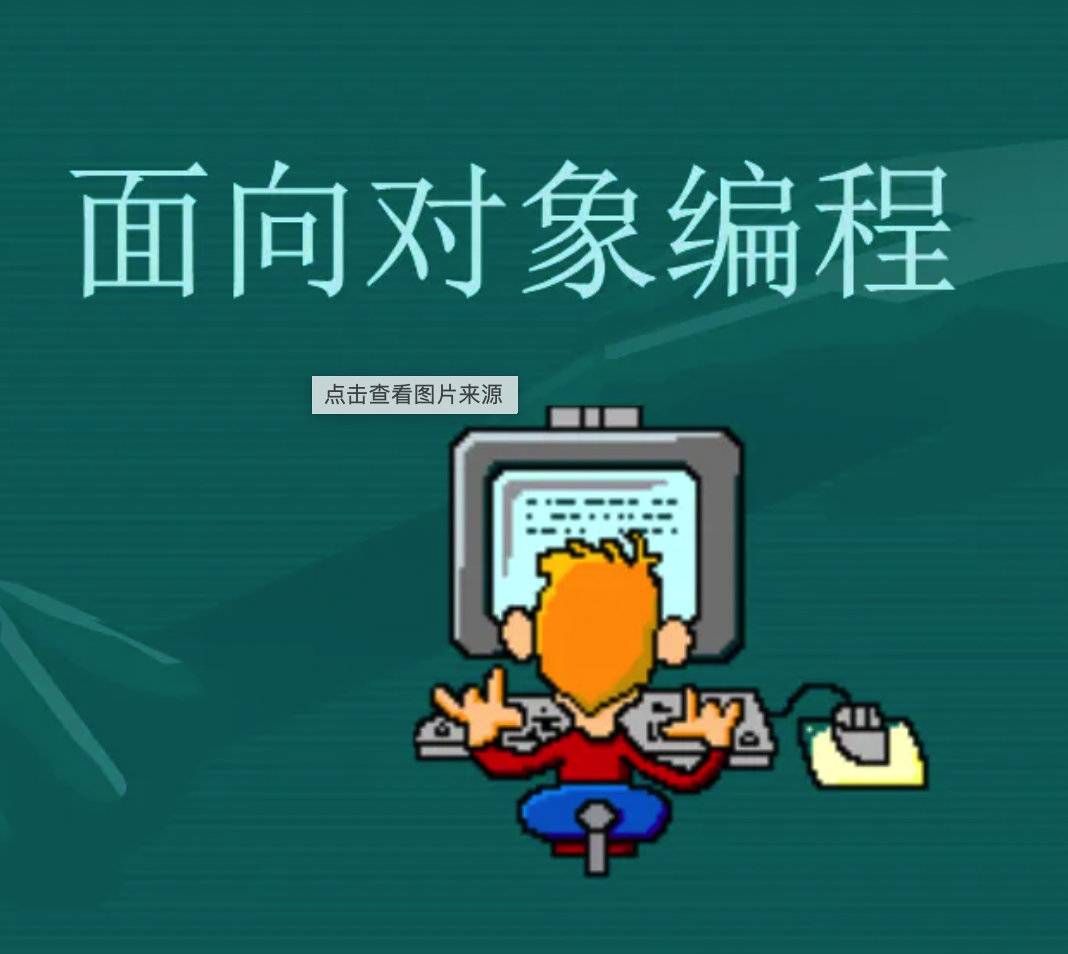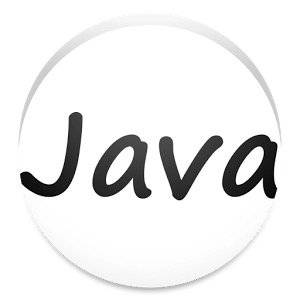新特性简介
速度更快
代码更少(增加了新的语法Lambda表达式) 强大的 Stream API 便于并行
最大化减少空指针异常 Optional
Lambda表达式 为什么使用Lambda表达式 概述 Lambda 是一个匿名函数 ,我们可以把 Lambda 表达式理解为是一段可以传递的代码 (将代码像数据一样进行传递)。可以写出更简洁、更灵活的代码。作为一种更紧凑的代码风格,使 Java的语言表达能力得到了提升。
1 2 3 4 5 6 7 8 9 10 11 12 13 14 15 16 17 18 19 20 21 22 23 24 25 26 27 @Test public void test1 () Comparator<String> com = new Comparator<String>(){ @Override public int compare (String o1, String o2) return Integer.compare(o1.length(), o2.length()); } }; TreeSet<String> ts = new TreeSet<>(com); TreeSet<String> ts2 = new TreeSet<>(new Comparator<String>(){ @Override public int compare (String o1, String o2) return Integer.compare(o1.length(), o2.length()); } }); } @Test public void test2 () Comparator<String> com = (x, y) -> Integer.compare(x.length(), y.length()); TreeSet<String> ts = new TreeSet<>(com); }
案例分析 1 2 3 4 5 6 7 8 9 10 11 12 13 14 15 16 17 18 19 20 21 22 23 24 25 26 27 28 29 30 31 32 33 34 35 36 37 38 39 40 41 42 43 44 45 46 47 48 49 50 51 52 53 54 55 56 57 58 59 60 61 62 63 64 65 66 67 68 69 70 71 72 73 import java.util.Objects;public class Employee private int id; private String name; private int age; private double salary; public Employee () } public Employee (int id, String name, int age, double salary) this .id = id; this .name = name; this .age = age; this .salary = salary; } public int getId () return id; } public void setId (int id) this .id = id; } public String getName () return name; } public void setName (String name) this .name = name; } public int getAge () return age; } public void setAge (int age) this .age = age; } public double getSalary () return salary; } public void setSalary (double salary) this .salary = salary; } @Override public boolean equals (Object o) if (this == o) return true ; if (!(o instanceof Employee)) return false ; Employee employee = (Employee) o; return getId() == employee.getId() && getAge() == employee.getAge() && Double.compare(employee.getSalary(), getSalary()) == 0 && Objects.equals(getName(), employee.getName()); } @Override public int hashCode () return Objects.hash(getId(), getName(), getAge(), getSalary()); } @Override public String toString () return "Employee{" + "id=" + id + ", name='" + name + '\'' + ", age=" + age + ", salary=" + salary + '}' ; } }
1 2 3 4 5 6 7 8 9 10 11 12 13 14 15 16 17 18 19 20 21 22 23 24 25 26 27 28 29 List<Employee> emps = Arrays.asList( new Employee(101 , "小新" , 18 , 9999.99 ), new Employee(102 , "伟伟" , 59 , 6666.66 ), new Employee(103 , "鑫鑫" , 28 , 3333.33 ), new Employee(104 , "创儿" , 20 , 7777.77 ), new Employee(105 , "小寒" , 38 , 5555.55 ) ); public List<Employee> filterEmployeeAge (List<Employee> emps) List<Employee> list = new ArrayList<>(); for (Employee emp : emps) { if (emp.getAge() <= 35 ){ list.add(emp); } } return list; } public List<Employee> filterEmployeeSalary (List<Employee> emps) List<Employee> list = new ArrayList<>(); for (Employee emp : emps) { if (emp.getSalary() >= 5000 ){ list.add(emp); } } return list; }
优化1: 策略设计模式 1 2 3 4 5 6 7 8 9 10 public List<Employee> filterEmployee (List<Employee> emps, MyPredicate<Employee> mp) List<Employee> list = new ArrayList<>(); for (Employee employee : emps) { if (mp.test(employee)){ list.add(employee); } } return list; }
1 2 3 public interface MyPredicate <T > public boolean test (T t) }
1 2 3 4 5 6 public class FilterEmployeeForAge implements MyPredicate <Employee > @Override public boolean test (Employee t) return t.getAge() <= 35 ; } }
1 2 3 4 5 6 public class FilterEmployeeForSalary implements MyPredicate <Employee > @Override public boolean test (Employee t) return t.getSalary() >= 5000 ; } }
1 2 3 4 5 6 7 8 9 10 11 12 @Test public void test () List<Employee> list = filterEmployee(emps, new FilterEmployeeForAge()); for (Employee employee : list) { System.out.println(employee); } System.out.println("------------------------------------------" ); List<Employee> list2 = filterEmployee(emps, new FilterEmployeeForSalary()); for (Employee employee : list2) { System.out.println(employee); } }
优化2: 匿名内部类 1 2 3 4 5 6 7 8 9 10 11 12 13 14 @Test public void test3 () List<Employee> list = filterEmployee(emps, new MyPredicate<Employee>() { @Override public boolean test (Employee t) return t.getId() <= 103 ; } }); for (Employee employee : list) { System.out.println(employee); } }
优化3: Lambda 表达式 1 2 3 4 5 6 7 8 9 10 11 @Test public void test4 () List<Employee> list = filterEmployee(emps, (e) -> e.getAge() <= 35 ); list.forEach(System.out::println); System.out.println("------------------------------------------" ); List<Employee> list2 = filterEmployee(emps, (e) -> e.getSalary() >= 5000 ); list2.forEach(System.out::println); }
优化4: Stream API 1 2 3 4 5 6 7 8 9 10 11 12 13 14 15 @Test public void test5 () emps.stream() .filter((e) -> e.getAge() <= 35 ) .forEach(System.out::println); System.out.println("----------------------------------------------" ); emps.stream() .map(Employee::getName) .limit(3 ) .sorted() .forEach(System.out::println); }
Lambda表达式语法 Lambda 表达式在 Java 语言中引入了一个新的语法元素和操作符。这个操作符为 “->” ,该操作符被称为 Lambda 操作符或箭头操作符。它将 Lambda 分为两个部分:
左侧:指定了 Lambda 表达式需要的所有参数
右侧:指定了 Lambda 体,即 Lambda 表达式要执行的功能
语法格式一:无参,无返回值,Lambda 体只需一条语句
1 2 Runnable r = () -> System.out.println("HelloWorld~" ); r.run();
语法格式二:Lambda 需要一个参数,无返回值
1 2 Consumer<String> con = (a) -> System.out.println(a); con.accept("我是Lambda~" );
语法格式三:Lambda 只需要一个参数时,参数的小括号可以省略
1 2 Consumer<String> con = a -> System.out.println(a); con.accept("我是Lambda~" );
语法格式四:Lambda 需要两个参数,且Lambda体中有多条语句,并且有返回值
1 2 3 4 5 6 Comparator<Integer> comparator = (a,b) -> { System.out.println("函数式接口" ); return Integer.compare(a,b); }; int compare = comparator.compare(2 , 4 );System.out.println(compare);
语法格式五:当 Lambda 体只有一条语句时,return 与大括号可以省略
1 2 3 Comparator<Integer> comparator = (a,b) -> Integer.compare(a,b); int compare = comparator.compare(2 , 4 );System.out.println(compare);
语法格式六:数据类型可以省略,因为可由编译器推断得出, 称为“类型推断”
类型推断 Lambda 表达式中的参数类型都是由编译器推断得出的。Lambda 表达式中无需指定类型 ,程序依然可以编译,这是因为 javac 根据程序的上下文,在后台推断出了参数的类型。Lambda 表达式的类型依赖于上下文环境,是由编译器推断出来的。这就是所谓的 “ 类型推断”。
函数式接口 什么是函数式接口
只包含一个抽象方法的接口,称为函数式接口。 你可以通过 Lambda 表达式来创建该接口的对象。(若 Lambda 表达式抛出一个受检异常,那么该异常需要在目标接口的抽象方法上进行声明)。
我们可以在任意函数式接口上使用 @FunctionalInterface 注解 , 这样做可以检查它是否是一个函数式接口,同时 javadoc 也会包含一条声明,说明这个接口是一个函数式接口。
自定义函数式接口 1 2 3 4 @FunctionalInterface public interface MyFunc <T > public T getValue (T t) }
作为参数传递Lambda表达式 1 2 3 4 5 6 7 8 9 public Integer operation (Integer num, MyFunc<Integer> myFunc) return myFunc.getValue(num); } @Test public void test () Integer result = operation(10 ,(x) -> x * x); System.out.println(result); }
注意:作为参数传递 Lambda 表达式:为了将 Lambda 表达式作为参数传递,接收 Lambda 表达式的参数类型必须是与该 Lambda 表达式兼容的函数式接口的类型。
内置四大核心函数式接口 其他接口 Lambda练习 练习1: 调用Collections.sort()方法,通过定制排序比较两个Employee(优先按照年龄比较,年龄相同按照姓名排序),使用Lambda作为参数传递。
1 2 3 4 5 6 7 8 9 10 11 12 13 14 15 16 17 18 19 20 21 22 List<Employee> emps = Arrays.asList( new Employee(101 , "小新" , 18 , 9999.99 ), new Employee(102 , "伟伟" , 59 , 6666.66 ), new Employee(103 , "鑫鑫" , 28 , 3333.33 ), new Employee(104 , "创儿" , 20 , 7777.77 ), new Employee(105 , "小寒" , 38 , 5555.55 ) ); @Test public void test1 () Collections.sort(emps,(e1,e2) -> { if (e1.getAge() == e2.getAge()){ return e1.getName().compareTo(e2.getName()); } else { return Integer.compare(e1.getAge(),e2.getAge()); } }); for (Employee e : emps){ System.out.println(e); } }
练习2:
声明函数式接口,接口中声明抽象方法,public String getValue(String str);
声明类TestLambda,类中编写方法使用接口作为参数,将一个字符串转换为大写,并作为方法的返回值。
再将一个字符串的第二个和第四个索引位置进行截取子串。
1 2 3 4 @FunctionalInterface public interface MyFunction String getValue (String str) ; }
1 2 3 4 5 6 7 8 9 10 11 public String strHandler (String str, MyFunction mf) return mf.getValue(str); } @Test public void test () String upper = strHandler("abcAbc" ,(a -> a.toUpperCase(Locale.ROOT))); System.out.println(upper); String subString = strHandler("我在学习Lambda表达式" , (b) -> b.substring(2 ,4 )); System.out.println(subString); }
练习3:
声明一个带两个泛型的函数式接口,泛型类型为<T,R>,T为参数,R为返回值
接口中声明对应抽象方法
在TestLambda类中声明方法,使用接口作为参数,计算两个long型参数的和
再计算两个long型参数的乘积
1 2 3 4 @FunctionalInterface public interface MyFunction <T ,R > R getValue (T t1, T t2) ; }
1 2 3 4 5 6 7 8 9 public void op (Long l1, Long l2, MyFunction<Long,Long> mf) System.out.println(mf.getValue(l1,l2)); } @Test public void test () op(100L , 200L , (x,y) -> x + y); op(100L , 200L , (x,y) -> x * y); }
方法引用与构造器引用 方法引用 当要传递给 Lambda 体的操作,已经有实现的方法了,可以使用方法引用!
实现抽象方法的参数列表,必须与方法引用方法的参数列表保持一致!
方法引用:使用操作符 “::” 将方法名和对象或类的名字分隔开来。 如下三种主要使用情况:
注意: 当需要引用方法的第一个参数是调用对象,并且第二个参数是需要引用方法的第二个参数(或无参数)时:ClassName::methodName
构造器引用 格式:ClassName::new
与函数式接口相结合,自动与函数式接口中方法兼容。
可以把构造器引用赋值给定义的方法,与构造器参数列表要与接口中抽象方法的参数列表一致!
数组引用 格式:type[]::new
强大的Stream API 关于Stream Java8中有两大最为重要的改变。第一个是 Lambda 表达式;另外一个则是 Stream API(java.util.stream.*)。Stream 是 Java8 中处理集合的关键抽象概念 ,它可以指定你希望对集合进行的操作,可以执行非常复杂的查找、过滤和映射数据等操作。 使用Stream API 对集合数据进行操作,就类似于使用 SQL 执行的数据库查询。也可以使用 Stream API 来并行执行操作。简而言之, Stream API 提供了一种高效且易于使用的处理数据的方式。
流(Stream) 到底是什么呢?
是数据渠道,用于操作数据源(集合、数组等)所生成的元素序列。“集合讲的是数据,流讲的是计算!”
注意:
Stream 自己不会存储元素
Stream 不会改变源对象。相反,他们会返回一个持有结果的新Stream
Stream 操作是延迟执行的。这意味着他们会等到需要结果的时候才执行。
Stream操作三个步骤
创建 Stream: 一个数据源(如:集合、数组),获取一个流中间操作: 一个中间操作链,对数据源的数据进行处理终止操作(终端操作): 一个终止操作,执行中间操作链,并产生结果
创建Stream 由Collection接口创建 Java8 中的 Collection 接口被扩展,提供了两个获取流的方法:
default Stream<E> stream() : 返回一个顺序流default Stream<E> parallelStream() : 返回一个并行流
1 2 3 List<String> list = new ArrayList<>(); Stream<String> stream = list.stream();
由数组创建流 Java8 中的 Arrays 的静态方法 stream()可以获取数组流:
static <T> Stream<T> stream(T[] array): 返回一个流
1 2 3 Employee[] employees = new Employee[10 ]; Stream<Employee> stream1 = Arrays.stream(employees);
重载形式,能够处理对应基本类型的数组:
public static IntStream stream(int[] array)public static LongStream stream(long[] array)public static DoubleStream stream(double[] array)
由值创建流 可以使用静态方法Stream.of(), 通过显示值创建一个流。它可以接收任意数量的参数。
public static<T> Stream<T> of(T... values) : 返回一个流
1 2 Stream<String> stream2 = Stream.of("aa" , "bb" , "dd" , "cc" );
由函数创建流-创建无限流 可以使用静态方法 Stream.iterate() 和 Stream.generate(), 创建无限流。
迭代
public static<T> Stream<T> iterate(final T seed, final UnaryOperator<T> f)
1 2 Stream<Integer> stream3 = Stream.iterate(0 , (x) -> x + 2 );
生成
public static<T> Stream<T> generate(Supplier<T> s)
1 2 3 4 Stream.generate(() -> Math.random()) .limit(5 ) .forEach(System.out::println);
Stream中间操作 多个中间操作可以连接起来形成一个流水线,除非流水线上触发终止操作,否则中间操作不会执行任何的处理! 而在终止操作时一次性全部处理,称为“惰性求值”。
筛选与切片
filter(Predicate p):接收 Lambda,从流中排除某些元素。distinct():筛选,通过流所生成元素hashCode()和equals()去除重复元素limit(long maxSize):截断流,使其元素不超过给定数量。skip(long n):跳过元素,返回一个扔掉了前n个元素的流。若流中元素不足n个,则返回一个空流。与limit(n)互补
映射
map(Function f):接收一个函数作为参数,该函数会被应用到每个元素上,并将其映射成一个新的元素。mapToDouble(ToDoubleFunction f):接收一个函数作为参数,该函数会被应用到每个元素上,产生一个新的 DoubleStream。mapToInt(ToIntFunction f):接收一个函数作为参数,该函数会被应用到每个元素上,产生一个新的IntStream。mapToLong(ToLongFunction f):接收一个函数作为参数,该函数会被应用到每个元素上,产生一个新的LongStream。flatMap(Function f):接收一个函数作为参数,将流中的每个值都换成另一个流,然后把所有流连接成一个流。
排序
sorted():产生一个新流,其中按自然顺序排序sorted(Comparator comp):产生一个新流,其中按比较器顺序排序
Stream终止操作 终端操作会从流的流水线生成结果 。其结果可以是任何不是流的值,例如:List、Integer,甚至是 void。
查找与匹配
allMatch(Predicate p):检查是否匹配所有元素anyMatch(Predicate p):检查是否至少匹配一个元素noneMatch(Predicate p):检查是否没有匹配所有元素findFirst():返回第一个元素findAny():返回当前流中的任意元素count():返回流中元素总数max(Comparator c):返回流中最大值min(Comparator c):返回流中最小值forEach(Consumer c):内部迭代 (使用 Collection 接口需要用户去做迭代,称为外部迭代。相反,Stream API 使用内部迭代——它帮你把迭代做了)
归约
reduce(T iden, BinaryOperator b):可以将流中元素反复结合起来,得到一个值。返回 Treduce(BinaryOperator b):可以将流中元素反复结合起来,得到一个值。 返回 Optional<T>
备注:map 和 reduce 的连接通常称为map-reduce模式 ,因 Google 用它来进行网络搜索而出名。
收集
collect(Collector c):将流转换为其他形式。接收一个Collector接口的实现,用于给Stream中元素做汇总的方法
Collector 接口中方法的实现决定了如何对流执行收集操作(如收集到 List、Set、Map)。但是 Collectors 实用类 提供了很多静态方法,可以方便地创建常见收集器实例,具体方法与实例如下表:
StreamAPI练习 练习1: 给定一个数字列表,返回一个由每个数的平凡构成的列表。例如:给定【1,2,3,4,5】,返回【1,4,9,16,25】
1 2 3 4 5 6 7 @Test public void test1 () Integer[] numbers = new Integer[]{1 ,2 ,3 ,4 ,5 }; Arrays.stream(numbers) .mapToInt(x -> x * x) .forEach(System.out::println); }
练习2: 用map和reduce方法数一数流中有多少个Employee
1 2 3 4 5 6 7 8 9 10 11 12 13 14 15 List<Employee> emps = Arrays.asList( new Employee(101 , "小新" , 18 , 9999.99 ), new Employee(102 , "伟伟" , 59 , 6666.66 ), new Employee(103 , "鑫鑫" , 28 , 3333.33 ), new Employee(104 , "创儿" , 20 , 7777.77 ), new Employee(105 , "小寒" , 38 , 5555.55 ) ); @Test public void test2 () Optional<Integer> sum = emps.stream() .map(employee -> 1 ) .reduce(Integer::sum); System.out.println(sum.get()); }
练习3:
1 2 3 4 5 6 7 8 9 10 11 12 13 14 15 16 17 18 19 20 21 22 23 24 25 26 27 28 29 30 31 32 33 34 35 36 37 38 39 package exer.StreamAPI2;public class Trader private String name; private String city; public Trader () } public Trader (String name, String city) this .name = name; this .city = city; } public String getName () return name; } public void setName (String name) this .name = name; } public String getCity () return city; } public void setCity (String city) this .city = city; } @Override public String toString () return "Trader{" + "name='" + name + '\'' + ", city='" + city + '\'' + '}' ; } }
1 2 3 4 5 6 7 8 9 10 11 12 13 14 15 16 17 18 19 20 21 22 23 24 25 26 27 28 29 30 31 32 33 34 35 36 37 38 39 40 41 42 43 44 45 46 47 48 49 50 51 package exer.StreamAPI2;public class Transaction private Trader trader; private int year; private int value; public Transaction () } public Transaction (Trader trader, int year, int value) this .trader = trader; this .year = year; this .value = value; } public Trader getTrader () return trader; } public void setTrader (Trader trader) this .trader = trader; } public int getYear () return year; } public void setYear (int year) this .year = year; } public int getValue () return value; } public void setValue (int value) this .value = value; } @Override public String toString () return "Transaction{" + "trader=" + trader + ", year=" + year + ", value=" + value + '}' ; } }
1 2 3 4 5 6 7 8 9 10 11 12 13 14 15 16 17 18 19 20 21 22 23 24 25 26 27 28 29 30 31 32 33 34 35 36 37 38 39 40 41 42 43 44 45 46 47 48 49 50 51 52 53 54 55 56 57 58 59 60 61 62 63 64 65 66 67 68 69 70 71 72 73 74 75 76 77 78 79 80 81 82 83 84 85 86 87 88 89 90 91 92 93 94 95 96 97 98 99 100 101 102 103 104 105 106 107 108 109 110 111 112 113 114 115 116 117 118 package exer.StreamAPI2;import org.junit.Before;import org.junit.Test;import java.util.Arrays;import java.util.Comparator;import java.util.List;public class TestTransaction List<Transaction> transactions = null ; @Before public void before () Trader raoul = new Trader("Raoul" , "Cambridge" ); Trader mario = new Trader("Mario" , "Milan" ); Trader alan = new Trader("Alan" , "Cambridge" ); Trader brian = new Trader("Brian" , "Cambridge" ); transactions = Arrays.asList( new Transaction(brian, 2011 , 300 ), new Transaction(raoul, 2012 , 1000 ), new Transaction(raoul, 2011 , 400 ), new Transaction(mario, 2012 , 710 ), new Transaction(mario, 2012 , 700 ), new Transaction(alan, 2012 , 950 ) ); } @Test public void test1 () transactions.stream() .filter(t -> t.getYear() == 2011 ) .sorted(Comparator.comparingInt(Transaction::getValue)) .forEach(System.out::println); } @Test public void test2 () transactions.stream() .map(t -> t.getTrader().getCity()) .distinct() .forEach(System.out::println); } @Test public void test3 () transactions.stream() .filter(t -> t.getTrader().getCity().equalsIgnoreCase("Cambridge" )) .map(Transaction::getTrader) .sorted(Comparator.comparing(Trader::getName)) .distinct() .forEach(System.out::println); } @Test public void test4 () transactions.stream() .map(Transaction::getTrader) .map(Trader::getName) .sorted() .distinct() .forEach(System.out::println); } @Test public void test5 () System.out.println(transactions.stream() .anyMatch(t -> t.getTrader().getCity().equals("Milan" ))); } @Test public void test6 () System.out.println(transactions.stream() .filter(e -> e.getTrader().getCity().equals("Cambridge" )) .map(Transaction::getValue) .reduce(Integer::sum).get()); } @Test public void test7 () System.out.println(transactions.stream() .map(Transaction::getValue) .max(Integer::compare).get()); } @Test public void test8 () System.out.println(transactions.stream() .min(Comparator.comparingInt(Transaction::getValue)) .get()); } }
并行流与串行流 并行流就是把一个内容分成多个数据块,并用不同的线程分别处理每个数据块的流。
Java 8 中将并行进行了优化,我们可以很容易的对数据进行并行操作。Stream API 可以声明性地通过parallel()与 sequential()在并行流与顺序流之间进行切换。
Fork/Join 框架 Fork/Join框架: 就是在必要的情况下,将一个大任务,进行拆分(fork)成若干个小任务(拆到不可再拆时),再将一个个的小任务运算的结果进行 join 汇总。
Fork/Join 框架与传统线程池的区别 采用“工作窃取”模式(work-stealing): 当执行新的任务时它可以将其拆分分成更小的任务执行,并将小任务加到线程队列中,然后再从一个随机线程的队列中偷一个并把它放在自己的队列中。
相对于一般的线程池实现,fork/join框架的优势体现在对其中包含的任务的处理方式上。在一般的线程池中,如果一个线程正在执行的任务由于某些原因无法继续运行,那么该线程会处于等待状态。而在fork/join框架实现中,如果某个子问题由于等待另外一个子问题的完成而无法继续运行。那么处理该子问题的线程会主动寻找其他尚未运行的子问题来执行。这种方式减少了线程的等待时间,提高了性能。
Optional类 Optional<T> 类(java.util.Optional) 是一个容器类 ,代表一个值存在或不存在 ,原来用 null 表示一个值不存在,现在 Optional 可以更好的表达这个概念。并且可以避免空指针异常。
常用方法:
Optional.of(T t) :创建一个 Optional 实例Optional.empty() :创建一个空的 Optional 实例Optional.ofNullable(T t):若 t 不为 null,创建 Optional 实例,否则创建空实例 isPresent() :判断是否包含值orElse(T t) : 如果调用对象包含值,返回该值,否则返回t orElseGet(Supplier s) :如果调用对象包含值,返回该值,否则返回 s 获取的值map(Function f):如果有值对其处理,并返回处理后的Optional,否则返回 Optional.empty() flatMap(Function mapper):与 map 类似,要求返回值必须是Optional
接口中的默认方法与静态方法 默认方法 概述 Java 8中允许接口中包含具有具体实现的方法,该方法称为 “默认方法”,默认方法使用 default 关键字修饰。
类优先原则 若一个接口中定义了一个默认方法,而另外一个父类或接口中又定义了一个同名的方法时:
选择父类中的方法。如果一个父类提供了具体的实现,那么接口中具有相同名称和参数的默认方法会被忽略。
接口冲突。如果一个父接口提供一个默认方法,而另一个接口也提供了一个具有相同名称和参数列表的方法(不管方法是否是默认方法),那么必须覆盖该方法来解决冲突。
静态方法 Java8 中,接口中允许添加静态方法。
新时间日期API LocalDate、LocalTime、LocalDateTime LocalDate、LocalTime、LocalDateTime 类的实例是不可变的对象 ,分别表示使用 ISO-8601日历系统的日期、时间、日期和时间。它们提供了简单的日期或时间,并不包含当前的时间信息,也不包含与时区相关的信息。
注:ISO-8601日历系统是国际标准化组织制定的现代公民的日期和时间的表示法。
Instant 时间戳 用于“时间戳”的运算。它是以Unix元年(传统的设定为UTC时区1970年1月1日午夜时分)开始所经历的描述进行运算。
Instant.now():默认获取UTC时区
Duration 和 Period
Duration:用于计算两个“时间”间隔
Period:用于计算两个“日期”间隔
时间校正器
TemporalAdjuster:时间校正器 。有时我们可能需要获取例如:将日期调整到“下个周日”等操作。
TemporalAdjusters :该类通过静态方法提供了大量的常用 TemporalAdjuster 的实现。例如获取下个周日:
解析与格式化 java.time.format.DateTimeFormatter类:该类提供了三种格式化方法:
预定义的标准格式
语言环境相关的格式
自定义的格式
时区的处理 Java8 中加入了对时区的支持,带时区的时间为分别为:
ZonedDate
ZonedTime
ZonedDateTime
其中每个时区都对应着 ID,地区ID都为 “{区域}/{城市}” 的格式 例如:Asia/Shanghai 等
ZoneId:该类中包含了所有的时区信息
getAvailableZoneIds():可以获取所有时区时区信息of(id):用指定的时区信息获取 ZoneId 对象
重复注解与类型注解 Java 8 对注解处理提供了两点改进:






















